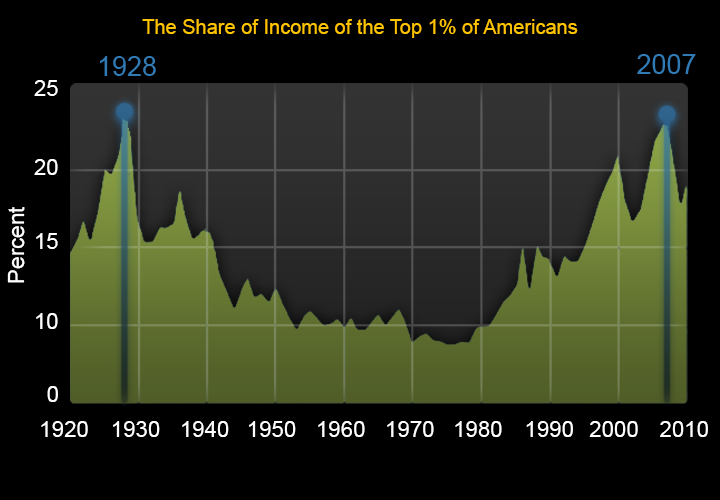Background
The "Second Gilded Age" is a term that social scientists use to compare income distribution today to the decades before 1928 in United States history. The term "gilded age" was created by Mark Twain in the 19th century to describe a period in which governmental policy was very favorable to the wealthiest Americans. Their famed opulence created an impression of national wealth that hid the actual poverty in which most Americans lived. Thus, American wealth was not real but just a gilded layer.
In the first Gilded Age, the top one percent of Americans began to accumulate great wealth after the Civil War and continued until 1928 — the year of highest income inequality to that point in American history. In 1928, the top one percent of families received 23.9 percent of pretax income. By 1944, after the Great Depression and WWII, they had fallen to just 11.3 percent and stayed at about that level until the 1970s. Starting in the 1980s and continuing until 2012, the top one percent had increased their share back up to 22.9 percent of pretax income.
Economist Robert Reich often shows the two peaks of income concentration of the top one percent in a graph that resembles the two towers of a suspension bridge. The similarity is striking in the wealth accumulation to 1928 and then to the year 2007. But so is the rapid decline of the income of the wealthiest Americans in the Great Depression of the 1930s and the Great Recession of 2008. Reich has an explanation for this. His argument is that when income distribution becomes so concentrated in the hands of so few people, the middle class weakens, and then the economy will slide into a severe economic decline. Why? The wealthy can buy only so much. When the middle class lacks the income to purchase, the overall economy suffers. Thus, the government must ensure with tax policy, wage regulation, and growth policies that this extreme concentration of wealth does not happen.

In this problem you will be looking for two other economic factors or indicators that may be tracking or related to income concentration. The first is increasing inequality in the pay of Americans. The second is decreasing social mobility or the ability of children born into the families with the lowest 10 percent of income to become a part of the top 10 percent income families. According to Reich, these two factors are closely related to income inequality.